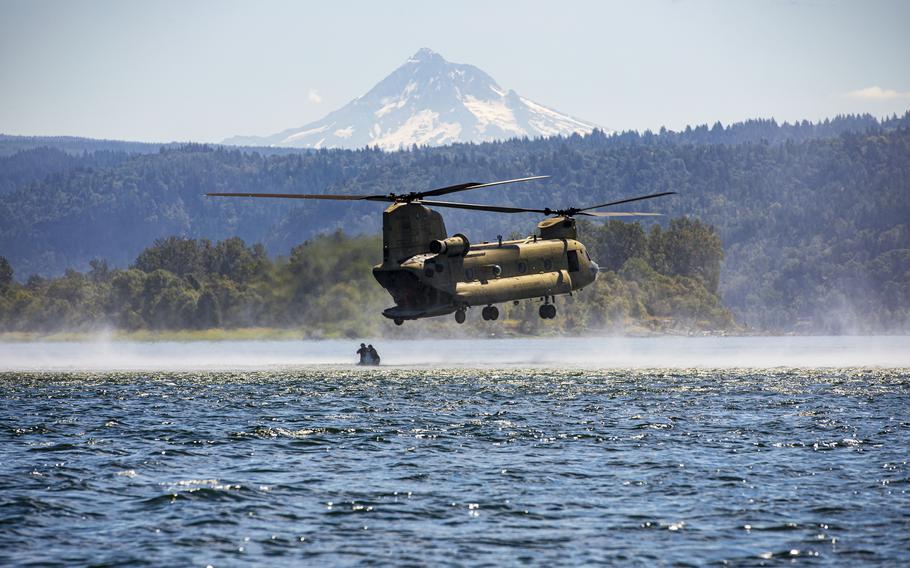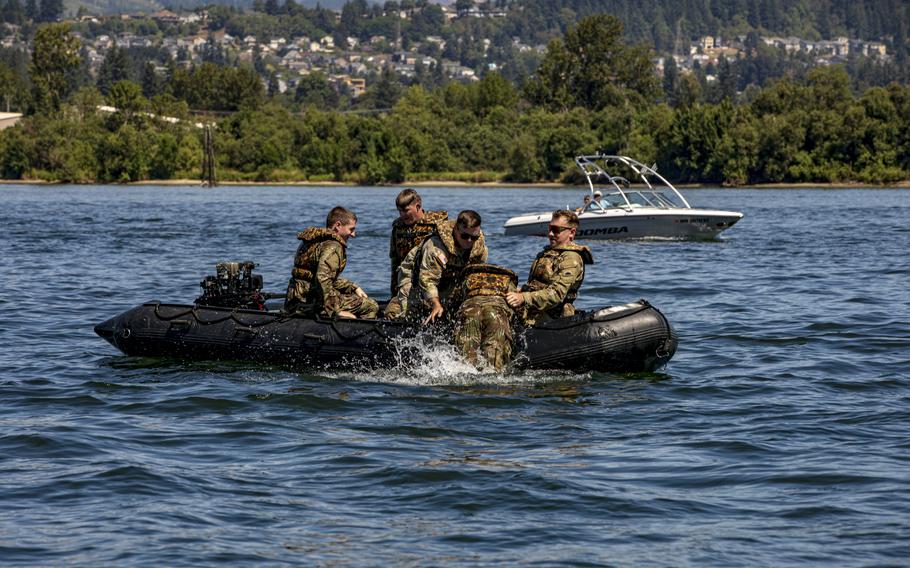
Members of the Washington Army National Guard, Oregon National Guard and U.S. Army Reserve participated in helocast training on the Columbia River, Troutdale, Ore., Aug. 8, 2025. (Nicolas A. Cloward/U.S. Army)
(Tribune News Service) — Washington Army National Guard soldiers descended on Southwest Washington rivers and lakes earlier this month for large-scale training exercises.
The exercises were aimed at preparing soldiers for air assaults and waterborne insertions in the Horn of Africa and around the Indo-Pacific, the Guard said in a recent news release. They come amid growing tensions with China over the future of Taiwan and increasing risks of the United States getting drawn into at least one of Israel’s U.S.-backed wars across the Middle East.
Soldiers of the 1st Squadron, 303rd Cavalry Regiment took the guard’s combat water survival test, as well as boat operation trainings, at Ike Kinswa State Park on Mayfield Lake on Aug. 2 and 3 in Lewis County.
The training culminated with an excursion up the Cowlitz River, performing capsize drills on inflatable boats used after crews jump from helicopters, Lt. Col. Eric Seeb, commander of the 1st Squadron, 303rd Cavalry Regiment, said in the news release.
“This prepared soldiers to assist 2nd Battalion, 162nd Infantry Regiment the following weekend with a helocast event at Captain William Clark Park on the Columbia River,” he added.
Helocast is a military term for soldiers jumping out of a helicopter into the water.

Members of the Washington Army National Guard, Oregon National Guard and U.S. Army Reserve participated in helocast training on the Columbia River, Troutdale, Ore., Aug. 8, 2025. (Nicolas A. Cloward/U.S. Army)
The second weekend of exercises centered around those boats deployed near Washougal, which then picked up about 200 soldiers who had been dropped out of military helicopters into the Columbia near Cottonwood Beach.
“A helocast insertion is another method for maritime infiltration that aligns with one of the squadron’s mission-essential tasks — conducting an air assault,” Seeb said. “Helocasting isn’t a typical air assault operation, but it could become vital for future operations in the Indo-Pacific region.”
Two hundred members of the squadron were also deployed to the Horn of Africa earlier this year as part of Combined Joint Task Force-Horn of Africa, the new release said.
The task force’s mission includes “countering violent extremism, building partner capacity, strengthening regional security partnerships and providing crisis response to support collective security efforts,” it concluded.
© 2025 The Columbian (Vancouver, Wash.).
Visit www.columbian.com.
Distributed by Tribune Content Agency, LLC.